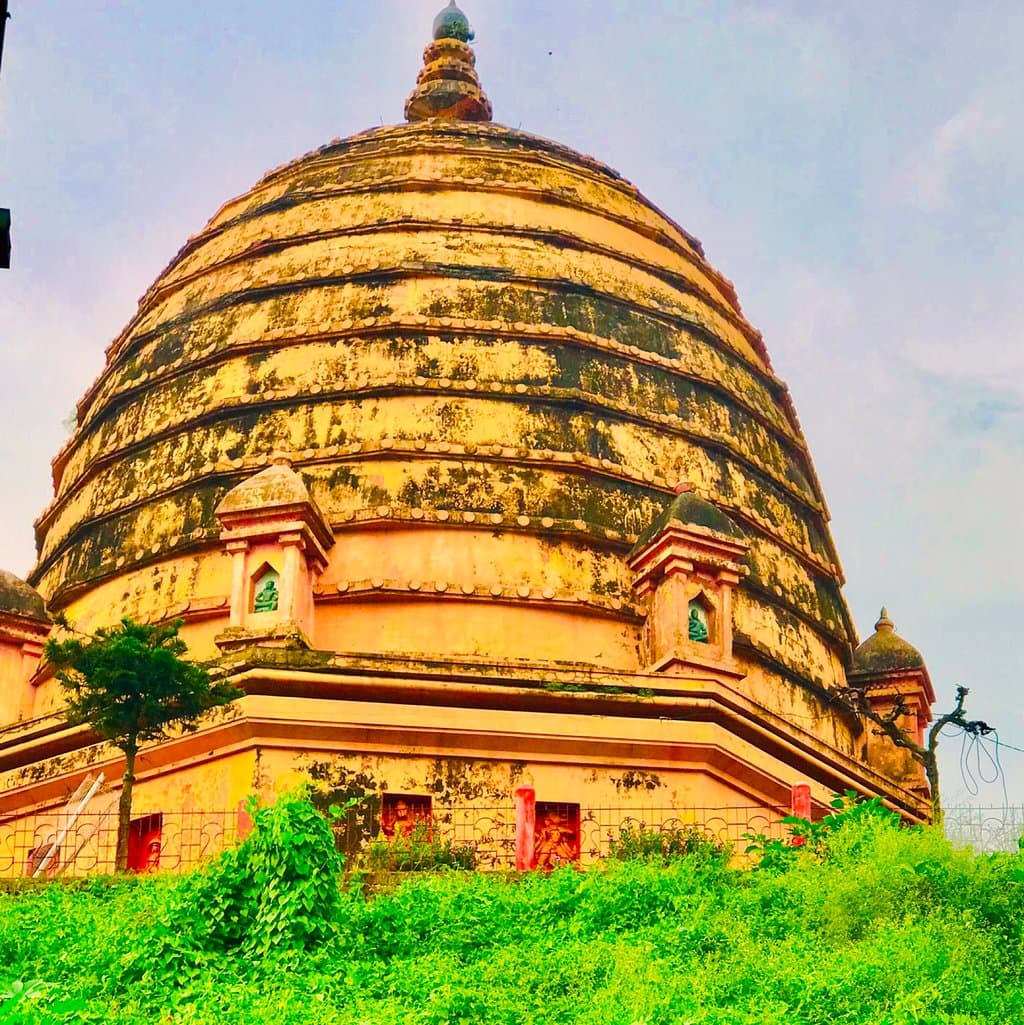
Navagraha Temple Guwahati
Ancient hilltop temple dedicated to the nine celestial bodies, offering spiritual solace and panoramic city views.
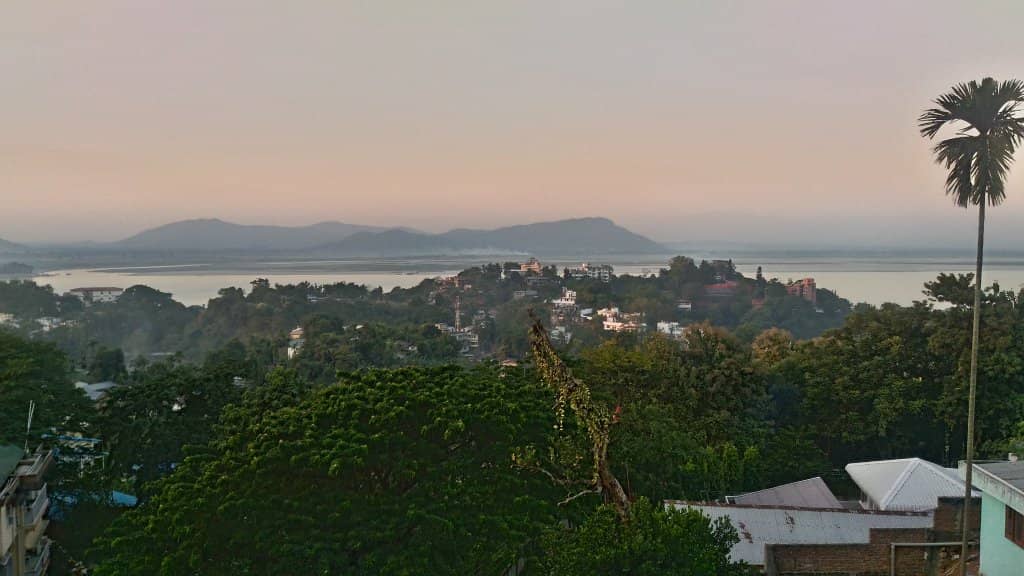
Highlights
Must-see attractions

Social
From TikTok & Reddit
Best Time
Peaceful atmosphere, best light

Navagraha Temple Guwahati
Best Time
Peaceful atmosphere, best light

Highlights
Must-see attractions
Ancient hilltop temple dedicated to the nine celestial bodies, offering spiritual solace and panoramic city views.
"A divine spot where earth meets the stars – less tourist trap, more soul map."
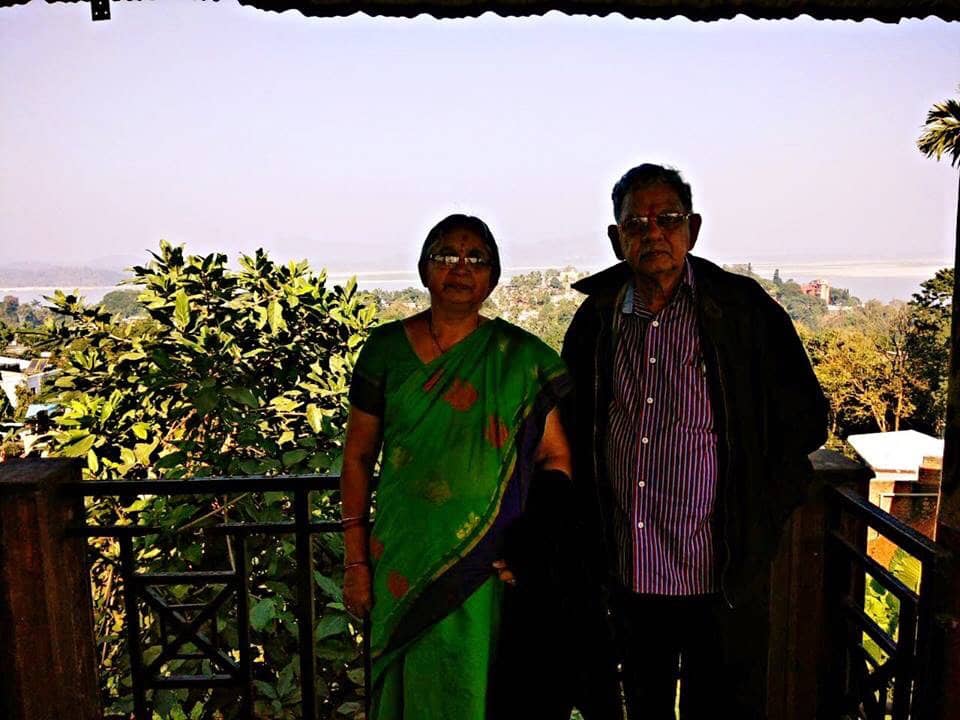
🐒 Watch Out for Monkeys!
Be mindful of monkeys on the hill; they can be cheeky and try to snatch belongings. Keep your food secure!
👟 Comfortable Shoes Recommended
The walk up the hill can be steep. Wear comfortable footwear for an easier climb.
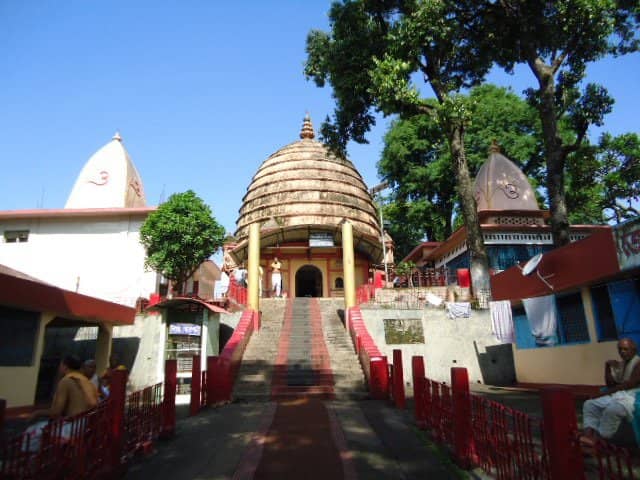
Highlights
Discover the most iconic attractions and experiences
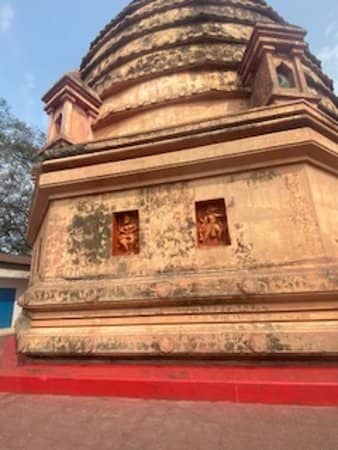
The Nine Shivalingas
Main Sanctum
Nine Shivalingas, each draped in a colored cloth, represent the celestial bodies of Vedic astrology.
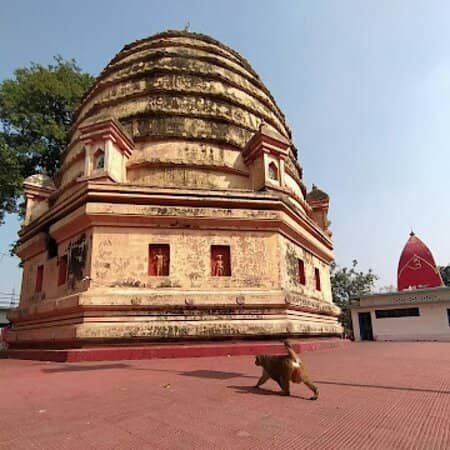
Panoramic City Views
Temple Hilltop
Breathtaking vistas of Guwahati city and the Brahmaputra River, especially magical at sunrise/sunset.
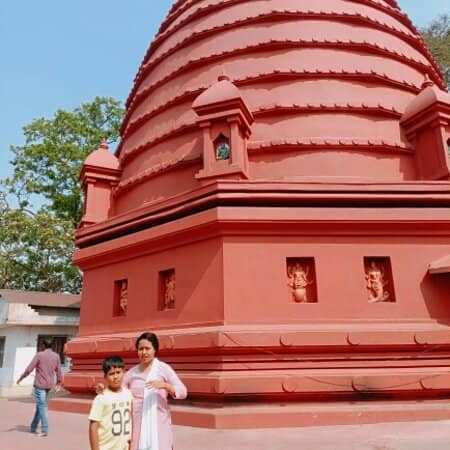
Ancient Astronomical Hub
Temple Grounds
Once a center for astrological studies, feel the historical significance of celestial observation.
Plans like a pro.
Thinks like you
Planning Your Visit
Timing Your Visit for Serenity
Respectful Attire & Offerings
Best Times
Insider Tips
from TikTok, Instagram & Reddit
🐒 Watch Out for Monkeys!
Be mindful of monkeys on the hill; they can be cheeky and try to snatch belongings. Keep your food secure!
👟 Comfortable Shoes Recommended
The walk up the hill can be steep. Wear comfortable footwear for an easier climb.
📸 Golden Hour Photography
Visit during sunrise or sunset for stunning cityscapes and divine lighting.
🙏 Respectful Dress Code
Cover shoulders and knees when visiting this sacred site.
Tips
from all over the internet
🐒 Watch Out for Monkeys!
Be mindful of monkeys on the hill; they can be cheeky and try to snatch belongings. Keep your food secure!
👟 Comfortable Shoes Recommended
The walk up the hill can be steep. Wear comfortable footwear for an easier climb.
📸 Golden Hour Photography
Visit during sunrise or sunset for stunning cityscapes and divine lighting.
🙏 Respectful Dress Code
Cover shoulders and knees when visiting this sacred site.
💧 Carry Water
Especially if visiting during warmer months, stay hydrated during your visit.
What Travellers Say
Reviews Summary
Visitors praise the Navagraha Temple for its profound spiritual energy, unique astrological significance, and breathtaking panoramic views of Guwahati. The historical importance and serene atmosphere are frequently highlighted as major draws, offering a peaceful escape from the city bustle.
"If you truly want to experience Guwahati, this place is it. Located on top of a hill, this Temple gives you a panoramic view of the city on one side and the Brahmaputra river on the other. North Guwahati is clearly visible from here as well. The road up is steep but nothing too bad like all those years ago when it was a challenge to get to this Temple. One thing to note: be careful of the monkeys!"
Nayan Das
"Perched atop the serene Chitrachal Hill in Guwahati, the beautiful Navagraha Temple isn’t just another ancient shrine — it’s the kind of place where time slows down, your phone signal weakens, and you finally hear the stars whispering. Or maybe that’s just the wind whistling through the banyan trees. Either way, it's magical.
Built in the 18th century by the then Ahom King Rajeswar Singha, this temple is dedicated to the nine celestial influencers — the Navagrahas — who, according to the Hindu astrology, play cosmic chess with our destinies. From the fiery Mars (Mangala) to the mystical Rahu and Ketu, each "graha" has its own seat inside, represented by nine Shivalingas, each covered with a colored cloth to denote its corresponding planet. No flashy LED lights or loudspeakers — just stone, silence, and spirituality.
Fascinating Bits That Are Truly Out of This World:
- The temple is also called "The Temple of Nine Planets" (obviously!) and was once a center for astronomical and astrological studies, housing scholars who observed the stars long before Google Sky.
- Though dedicated to the Navagrahas, the main deity is Lord Shiva, linking the temple to both cosmic science and spiritual strength.
- The original dome was partially damaged by an earthquake in the late 19th century but was later restored by local devotees and the Assam government.
- From its hilltop perch, the temple offers a panoramic view of the Guwahati city and the mighty Brahmaputra River — ideal for those deep, Instagram-worthy "soul searching" shots.
Cosmic Reflection:
A visit to the Navagraha Temple is like stepping into the quiet heart of the universe — with just the right blend of mythology, astrology, and mysticism. Whether you’re appeasing Saturn or simply climbing the hill for that peace of mind your therapist suggested, you’ll leave a tad lighter (and not just from the climb).
Final Verdict:
Less tourist trap, more soul map. A divine spot where earth meets the stars — and your horoscope finally makes sense."
Rajdeep Dutta
"The Navagraha Temple, meaning “Temple of the Nine Celestial Bodies”, is one of the most important and ancient temples in Assam. It is dedicated to the Navagrahas (Nine Planets in Hindu mythology) and plays a major role in astrological and spiritual traditions.
Built in the 18th century by Ahom King Rajeswar Singha, the temple is not just a religious site but also an important center of ancient astronomical study.
---
Religious & Astrological Significance:
The temple houses nine Shivalingas, each symbolizing one of the Navagrahas (Sun, Moon, Mars, Mercury, Jupiter, Venus, Saturn, Rahu, and Ketu).
Each Linga is covered with a colored cloth representing the corresponding planet.
The Sun God (Surya) is considered the presiding deity of the temple.
Devotees come here to neutralize malefic effects of certain planets in their horoscope through rituals and offerings.
---
Architecture & Atmosphere:
The temple is built in traditional Ahom-style architecture using brick and stone.
It has a red domed roof typical of Assamese temples, with a central sanctum housing the Navagraha deities.
Though damaged in the 1897 earthquake, parts of the original structure remain, and the temple continues to exude an ancient, sacred aura.
The view from the hilltop location is mesmerizing, offering a peaceful panorama of the Brahmaputra River and the cityscape of Guwahati.
---
Spiritual Experience:
The temple is often filled with the chanting of mantras and rituals by priests performing Navagraha puja.
Many astrologers and pandits sit outside the temple, offering horoscope readings and remedies.
A serene, spiritual energy fills the atmosphere, especially in the early morning hours.
---
It's a popular pilgrimage site for those seeking astrological remedies or blessings from the planetary deities.
The temple is particularly crowded on Sundays and during eclipses, believed to be astrologically powerful times.
Both locals and tourists visit for religious, cultural, and even educational purposes.
---
Rich in spiritual and astrological significance
Panoramic view from the hill
Calm and peaceful surroundings
Historical and cultural importance
The stairs up the hill might be tiring for some elderly visitors.
Surrounding infrastructure could be better maintained.
Can be crowded during peak times and religious festivals.
Best time to visit: Early morning or around sunset
Carry water and wear comfortable shoes for the climb.
If interested in astrology, consult a temple priest or pandit for a personalized puja or planetary remedy.
Don’t miss the panoramic view of the city from the temple.
The Navagraha Temple is more than just a place of worship — it's a blend of mythology, astrology, history, and peace. Whether you are a believer, a spiritual seeker, or a traveler interested in cultural heritage, this temple is a must-visit destination in Guwahati."
Bhaba Jyoti Nath
What People Like
What People Dislike
Frequently Asked Questions
🚇 🗺️ Getting There
The Navagraha Temple is located on Chitrachal Hill in the heart of Guwahati. You can reach it by taxi, auto-rickshaw, or local bus. The road up is now smoother than in previous years, making access easier.
Limited parking is usually available near the temple entrance. It's advisable to arrive early if you are driving.
While there are stairs, the road is accessible for vehicles. Many visitors opt for a taxi or auto-rickshaw to drive them directly to the temple.
No, the temple is situated within Guwahati city, making it easily accessible from most parts of the city.
Yes, local buses ply in the vicinity, and auto-rickshaws are readily available for a convenient ride to the temple.
🎫 🎫 Tickets & Entry
There is no entry fee to visit the Navagraha Temple. It is open to all visitors seeking spiritual solace or a glimpse of its unique architecture.
The temple is generally open from early morning until evening. It's best to visit during daylight hours to enjoy the views and atmosphere.
Yes, you can purchase flowers, diyas, and other religious offerings from vendors located just outside the temple premises.
No advance booking is required as there is no entry fee. You can visit anytime during its operating hours.
No specific rituals are required for entry. Visitors are expected to maintain decorum and respect the sanctity of the place.
🎫 🧭 Onsite Experience
The temple is dedicated to the nine celestial bodies (Navagrahas) in Hindu astrology, each represented by a Shivalinga. It was also a center for astronomical studies.
The main attraction is the nine Shivalingas, each covered with a colored cloth representing its corresponding planet. You'll also find the main deity, Lord Shiva.
Absolutely! The temple offers stunning panoramic views of Guwahati and the Brahmaputra River, especially beautiful during sunrise and sunset.
The climb can be steep, but vehicles can reach the temple. It's advisable to go during less crowded times for a more comfortable experience.
Early mornings or late afternoons, especially on weekdays, offer a more serene atmosphere away from the crowds.
🍽️ 🍽️ Food & Dining
While there are no restaurants directly within the temple complex, you can find various dining options in the surrounding areas of Guwahati city.
Yes, exploring the city of Guwahati will lead you to numerous eateries serving authentic Assamese cuisine.
Typically, religious sites like this do not have extensive dining facilities. It's best to plan your meals before or after your visit.
You might find cafes in the city offering views, but the temple itself is the primary spot for scenic vistas.
Assamese cuisine often features rice, fish, and local vegetables. Popular dishes include Khar, Tenga, and Pitika.
📸 📸 Photography
The hilltop offers panoramic views of Guwahati and the Brahmaputra River. The unique Shivalingas are also great subjects.
Photography might be restricted inside the innermost sanctum where the deities are housed. Be respectful of local customs.
Sunrise and sunset provide the most dramatic lighting for capturing the cityscapes and the temple's ambiance.
It's advisable to check local regulations regarding drone usage, as it may be restricted in religious and populated areas.
Always ask for permission before photographing individuals, especially priests and devotees engaged in prayer.
For Different Travelers
Tailored advice for your travel style
👨👩👧 Families with Kids
Be sure to keep a close eye on children, especially regarding the cheeky monkeys that inhabit the hill. It's also a great spot for them to witness a different kind of cultural practice and enjoy the expansive views of the city. Pack snacks and water, as dining options are limited on-site.
🧘 Spiritual Seekers & Astrologers
You'll often find pandits and astrologers outside the temple offering readings and guidance. The serene atmosphere, coupled with the chanting of mantras, creates a powerful spiritual environment conducive to meditation and introspection.
📸 Photographers & View Enthusiasts
Beyond the landscape, the unique sight of the nine Shivalingas, each draped in a different colored cloth, offers compelling photographic opportunities. Remember to be respectful of the sacred space and ask for permission before photographing individuals.
Deep Dives
In-depth insights and expert knowledge
The Celestial Significance of Navagraha
Historically, the temple was built in the 18th century by Ahom King Rajeswar Singha, not just as a religious site but also as an observatory. Scholars would gather here to study the movements of the stars and their impact on earthly affairs. This tradition underscores the deep connection between spirituality and celestial science in ancient Indian culture. The temple's very name, 'Navagraha,' meaning 'nine planets,' emphasizes this profound cosmic connection.
Devotees visit the Navagraha Temple seeking to neutralize malefic planetary influences in their horoscopes and to invoke blessings for a harmonious life. The priests often perform specific pujas and rituals tailored to individual astrological needs. The atmosphere is often filled with chanting and a palpable sense of spiritual energy, making it a significant pilgrimage destination for those interested in astrology and Vedic traditions.
Architectural Style and Historical Context
Built during the reign of King Rajeswar Singha, the temple is a testament to the rich heritage of the Ahom dynasty. Its hilltop location on Chitrachal Hill is not merely for scenic beauty but also strategically chosen for its historical role as an astronomical observation point. The temple complex, though not sprawling, exudes an ancient and sacred aura, inviting visitors to step back in time.
Beyond its religious significance, the temple offers a mesmerizing panoramic view of the Guwahati cityscape and the mighty Brahmaputra River. This vantage point makes it an ideal spot for reflection and appreciating the natural beauty of the region. The blend of historical architecture, spiritual ambiance, and breathtaking views makes the Navagraha Temple a multifaceted attraction.
Social
from TikTok, Instagram & Reddit